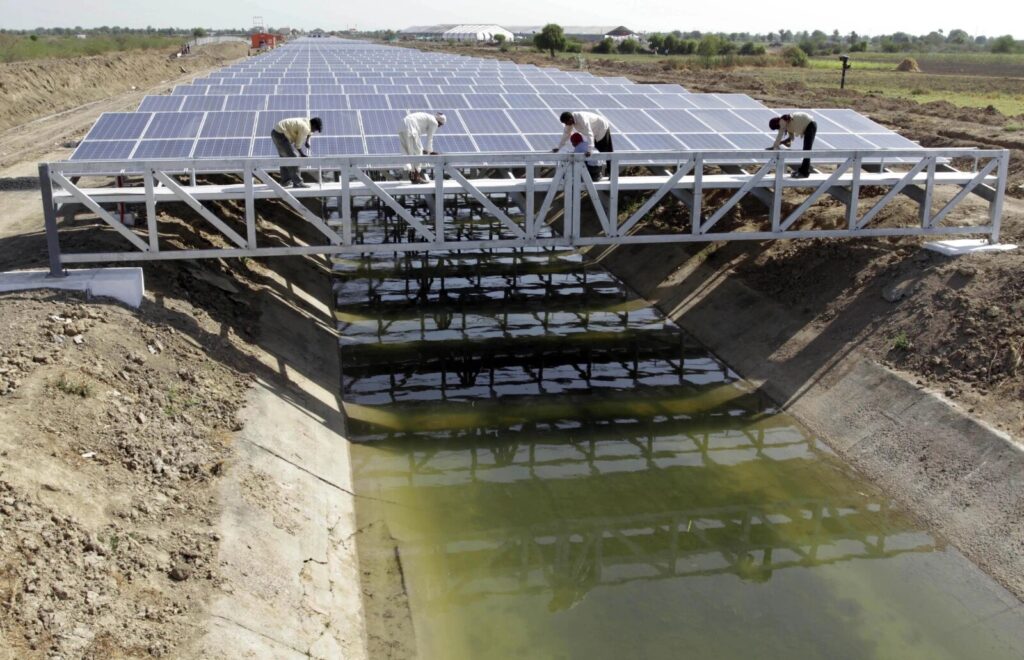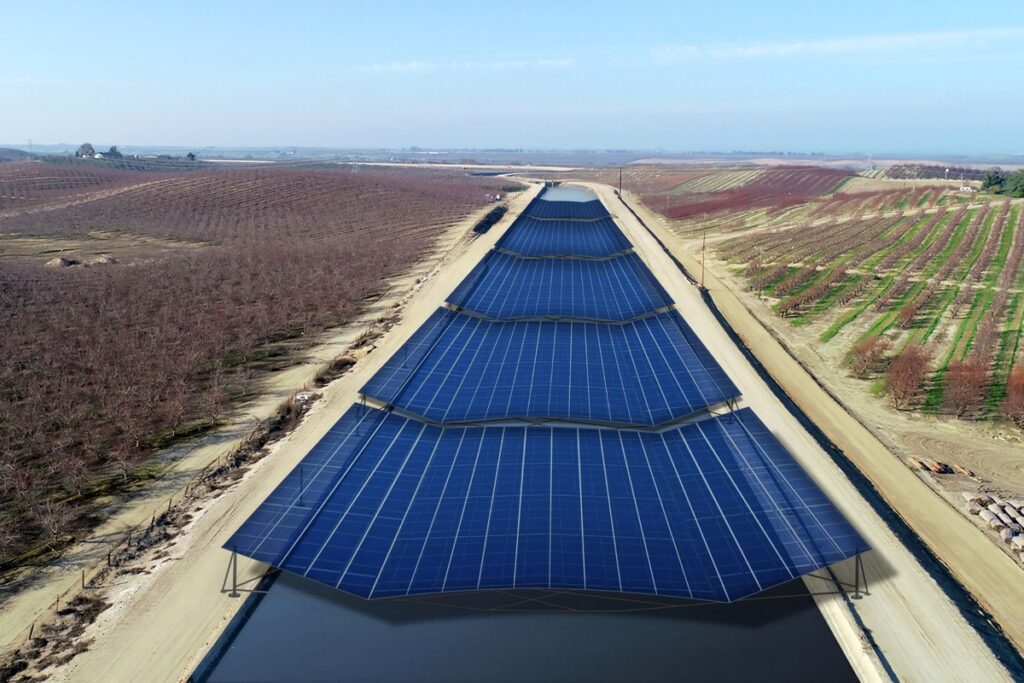At Central Valley, Californiathe company Solar AquaGrid has launched an ambitious project that seeks to provide two solutions to the effects of climate change: to increase the production of clean energies and improve the water management.
This firm applies the systems thinking in building a platform for public, private and academic collaboration. One such collaboration is Nexus Projectwhich is based on a study of the University of California (UC Merced) that says that if all the channels in that state were covered with solar panels (approximately 6,000 kilometers) could save 240 million m3 of water and generate 13 GW of electricity. solar energy per year.
"Until this UC Merced paper came out, we never really saw what those co-benefits would be. If anyone was going to test this concept, we wanted to make sure it was us," Josh Weimer, external affairs manager for the Turlock Irrigation District, told the AP.
The state committed $20 million in public funds, making the pilot plan a three-way collaboration between the private, public and academic sectors. Approximately 2.6 kilometers (1.6 miles) of canals ranging from 20 to 110 feet wide will be covered with solar panels five to 15 feet off the ground.

Clean energy and water efficiency
The Nexus Project stands out for its holistic approach, addressing two of the most pressing problems of the Central Valley: the clean energy production and the efficient water management. The installation of solar panels on irrigation canals not only generates electricity from a renewable source, but also helps to reduce water evaporation, a critical resource in an area frequently hit by droughts.
The solar panels installed over the canals will generate a significant amount of electricity, decreasing the dependency on California in the fossil fuels and reducing emissions of greenhouse gases.
And while solar panels capture the Sun's energy, the shading they provide reduces the evaporation of water of the canals, thus conserving a vital resource for agriculture and human consumption.
An additional benefit is that the proximity to water helps to cool the solar panels, improving their efficiency and energy yield. This natural cooling allows the panels to operate more efficiently, especially during the hot summer months.
When installing the panels over the channels, the Nexus Project avoids the need to occupy agricultural or natural land, optimizing the use of space without interfering with agricultural production.
Thanks to this project, it is estimated that California could save up to 63 million gallons of water, about 238 billion liters per year, enough to meet the needs of approximately two million people.
"The Solar AquaGrid model offers a combined, integrated response to address our water-energy nexus, helps address California's underlying vulnerabilities, while meeting commitments at the state and federal level to produce renewable energy, preserve natural lands, reduce greenhouse gas emissions and mitigate climate change," expounded Roger Bales, a professor at UC Merced.
This pilot project is expected to be completed by 2024 and the combination of solar energy y efficient water management can be replicated on a larger scale.
Source: Solar AquaGrid, AP


